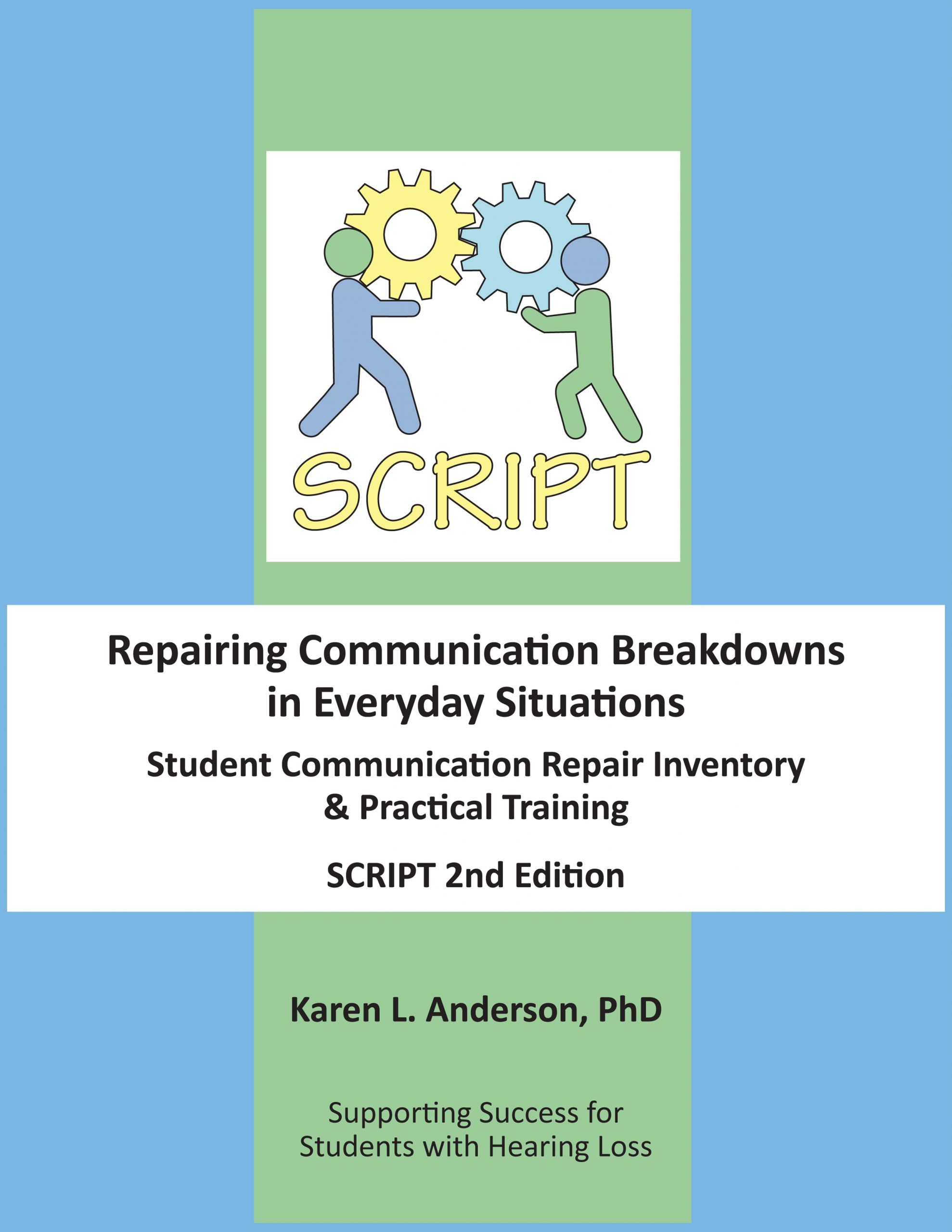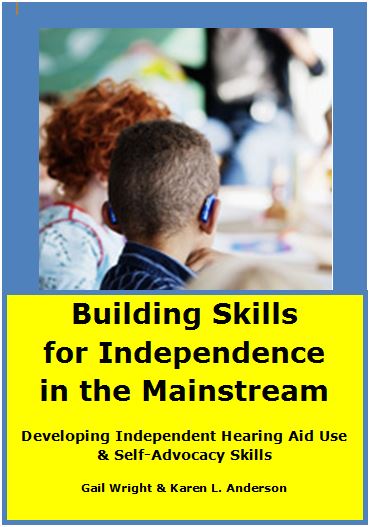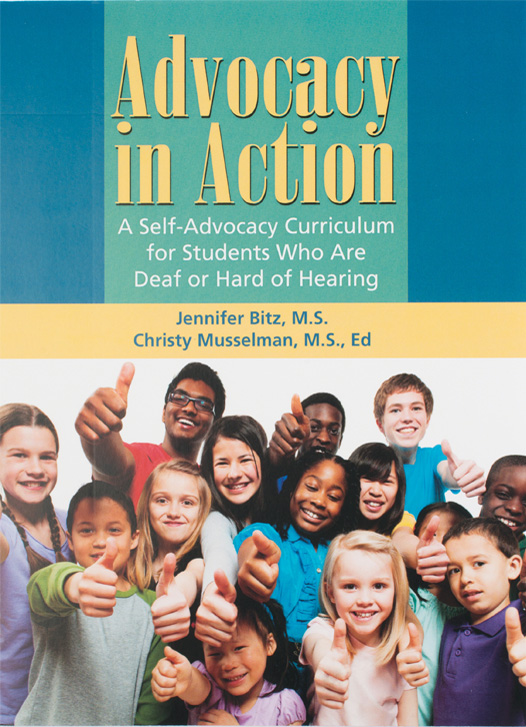Related Products
For Professionals
- Amplification
- Assessment of Student Skills, Challenges, Needs
- Early Childhood: Infants, Toddlers, Preschool
- Hearing Loss – Identification, Impact and Next Steps
- IDEA Law Summary Information
- Language and Speech Development Issues
- Legal Issues in Serving Children with Hearing Loss
- Listening (Auditory Skills) Development
- Planning to Meet Student Needs
- Self-Advocacy Skills for Students with Hearing Loss
- Self-Concept: How the Child with Hearing Loss Sees Himself
- Social Skills
- Speech Perception & Learning
Related Teacher Tools Takeout Items
Self-Advocacy as a Stand-Alone Service?
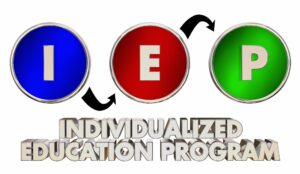
IEP Individualized Education Program Teaching Words 3d Render Illustration
Too often we hear, “He has good grades, so he won’t qualify for special education.” It is true that there must be a relationship between a child’s disability and school performance to qualify for services, however, IDEA specifies educational performance, not grades. There are characteristics associated with having a hearing loss that impact school performance, like missing or misunderstanding more communication than their peers. This is the basis for ongoing language and vocabulary issues and underlies the need for self-advocacy. Accommodations cannot close all ongoing communication gaps. It truly is necessary to teach self-advocacy skills to enable students to fully participate in the classroom and act appropriately when they know they have not fully received or understood information.
The ‘bread and butter’ of itinerant support to students with hearing loss is often considered to be ensuring communication access, supporting language development to allow expected academic progress, and self-advocacy skills training. While access relates to ADA requirements, and supporting language is linked to academics, training in self-advocacy is too often considered to be non-academic and therefore not necessary.
Students do not know what they didn’t hear because they didn’t hear it – yet they are held accountable for receiving and fully understanding this information.
| If a student who was low vision was continually knocking into people, desks, and classroom walls due to the inability to clearly see everything, a vision specialist would likely be called in to assist the student in developing appropriate orientation and mobility skills. A student with hearing loss often incompletely hears, misses spoken information, or misunderstands what is said. Self-Advocacy training is to a student with hearing loss what orientation and mobility training is to a student with visual impairment. |
Full participation in the classroom requires that a student recognize when a communication breakdown occurs, and self-advocate for their listening and learning needs. Students who are deaf or hard of hearing must have the knowledge and skills to access accommodations and support in any setting and as an integral part of an independent adulthood. Ideally, students would have instruction in self-advocacy from preschool through grade 4 (about age 10). As they reach the tween and teen years, focus should change on supporting the student’s ability to problem-solve communication issues as part of their self-determination of future goals.
The Iowa Core Curriculum states, “students who are deaf or hard of hearing have specialized needs not covered in the general education curriculum. Hearing loss adds a dimension to learning that often requires explicit teaching, such as information gained through incidental learning. It has been estimated that for persons without hearing loss, 80% of information learned is acquired incidentally. No effort is required. Any type of hearing loss interrupts this automatic path to gain information. This incidental information must be delivered directly to students who are deaf or hard of hearing.
Most teachers without specialized training related to hearing loss do not have the expertise to address the unique needs of students who are deaf or hard of hearing. Therefore, IFSP & IEP team collaboration with educational audiologists and teachers of students who are deaf or hard of hearing is necessary in addressing academic and social instruction and the assessment of these areas. In order to close this information gap, the Expanded Core Curriculum for Students who are Deaf or Hard of Hearing was developed.”
Legal Considerations
In determining whether a child has educational performance needs that require specialized support IDEA specifies that team must: iv) Consider the communication needs of the child, and in the case of the child who is deaf or hard of hearing, consider the language and communication needs, opportunities for direct communication with peers and professional personnel in the child’s language and communication mode, academic level, and full range of needs, including opportunities for direct instruction in the child’s language and communication mode… 34 CFR 303.324(2). Hearing loss of any degree impacts and reduces the amount of communication students fully receive.
The American’s with Disabilities Act is a discrimination law that, in summary, requires schools to ensure that students with hearing loss have communication that is as effective as it is for others. If not, auxiliary aids and services must be provided to “level the playing field” or allow equal access. Since we KNOW that there is no amplification that fully closes the ‘listening gap’ for students in a classroom and we KNOW that incidental language will be missed, and we KNOW that classroom or group discussions are especially challenged then the FACT that students with hearing loss will not perceive information as fully as hearing peers will be one of their (full range of) needs.
| Not hearing everything in the classroom does have an adverse educational effect on the ability to fully comprehend, learn at the same pace as others, and fully participate in all school activities. |
IDEA has indicated that a child’s disability condition must have an adverse educational effect to be considered eligible for specialized services. Note – IDEA did not say the child must have poor grades. Self-advocacy skills, if the student knows how and when to appropriately use them, facilitate full participation and greater levels of comprehension, thereby allowing full access to the general education curriculum.
Components of Self-Advocacy: Following are basic questions that students with hearing loss typically require instruction in so that they can understand their hearing needs and respond appropriately.
Self-Advocacy
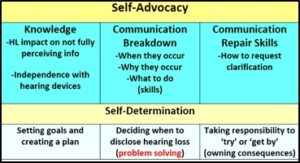
- 1. What does it mean to have a hearing loss?
- 2. Why do I have problems understanding (relate to hearing loss and language issues)?
- 3. How does my hearing loss affect me (school, socially)?
- 4. When do I have problems understanding what people say?
- 5. How important are my hearing devices?
- 6. How do I know when my hearing devices are not working?
- 7. What should I do when they are not working?
- 8. What can I do when I know I have not heard what was said (specific self-advocacy & communication repair strategies)?
Self-Determination
- 1. How much am I willing to have the hearing loss impact how well I do in school (planning/future goals)?
- 2. When is it critical for me to disclose my hearing loss (problem solving)?
- 3. What are my legal rights to access, supports, and services?
From the US Office of Civil Rights:
We need to encourage students to understand their disability.
- They need to know the functional limitations that result from their disability.
- Understand their strengths and weaknesses. Be able to explain their disability to others.
- Be able to their difficulties in the past, and what has helped them overcome such problems.
- This should include specific adjustments or strategies that might work in specific situation.
- They must practice explaining their disability, as well as why they need certain accommodations, supports, or services.
U.S. Department of Education, Office for Civil Rights, Transition of Students With Disabilities to Postsecondary Education: A Guide for High School Educators, Washington, D.C., 2007
He does not know what he did not hear.
This reality underlies the requirement to teach self-advocacy, specifically teaching the student about what he does hear, does not hear and under what conditions, and how to use situational awareness to recognize when he likely missed information. Some knowledge of hearing loss teaching and assessment resources:
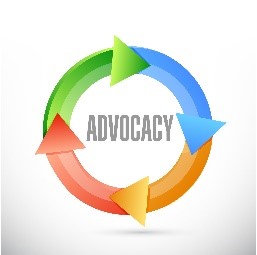
- 1. Advocacy in Action Self-Advocacy Curriculum
- 2. Audiology Self-Advocacy Checklist – Elementary School Middle School High School
- 3. Building Skills for Success in the Fast-Paced Classroom
- 4. ELFLing
- 5. Monkey Talk Self-Advocacy Game
- 6. Phonak Guide to Access Planning
- 7. Recorded Functional Listening Evaluation Using Sentences (FLE)
- 8. Rule the School Self-Advocacy Game
- 9. Steps to Success Sequence of Skills for Students who are Deaf/Hard of Hearing
Teaching Hearing Device Use and Troubleshooting
Some knowledge of hearing device use teaching and assessment resources:
- 1. Race to the Brain Game
- 2. Advocacy in Action Self-Advocacy Curriculum
- 3. Building Skills for Independence in the Mainstream
- 4. SEAM – Student Expectations for Advocacy & Monitoring Listening and Hearing Technology (PDF)
- 5. Steps to Success Scope and Sequence of Skills for Students who are Deaf/Hard of Hearing
Teaching Self-Advocacy Strategies
Some knowledge of self-advocacy skills teaching and assessment resources:
- 1. Advocacy in Action Self-Advocacy Curriculum
- 2. Building Skills for Independence in the Mainstream
- 3. Building Skills for Success in the Fast-Paced Classroom
- 4. COACH: Self-Advocacy & Transition Skills for Secondary Students who are Deaf/Hard of Hearing
- 5. Guide to Self-Advocacy Skill Development: Suggestions for Sequence of Skill Attainment (PDF)
- 6. Monkey Talk Self-Advocacy Game
- 7. Phonak Guide to Access Planning
- 8. SCRIPT 2nd Ed: Student Communication Repair Inventory & Practical Training
- 9. Steps to Success Scope and Sequence of Skills for Students who are Deaf/Hard of Hearing
- 10. What’s the Problem Game
Success in the general education setting requires ongoing instruction in self-advocacy skills needs, including hearing device independence for students who are hard of hearing, as part of the IEP or 504 Plan.

